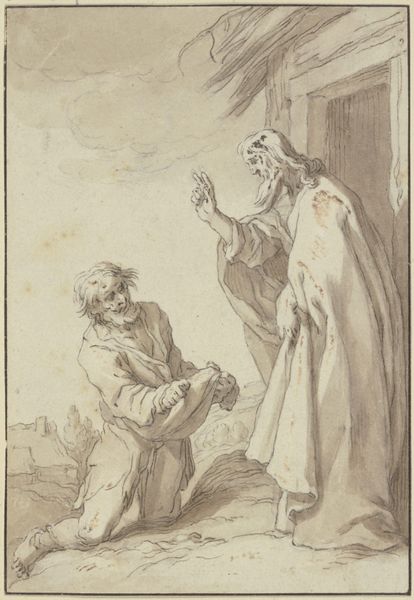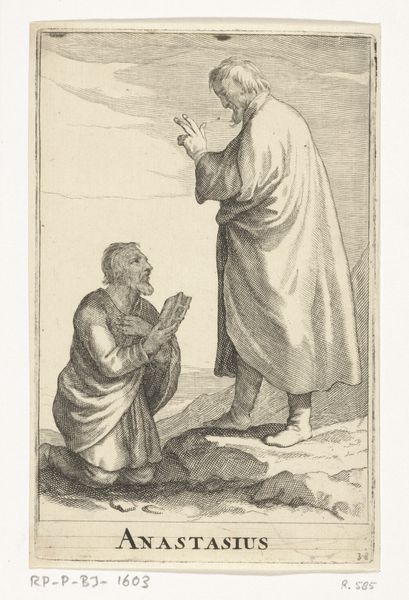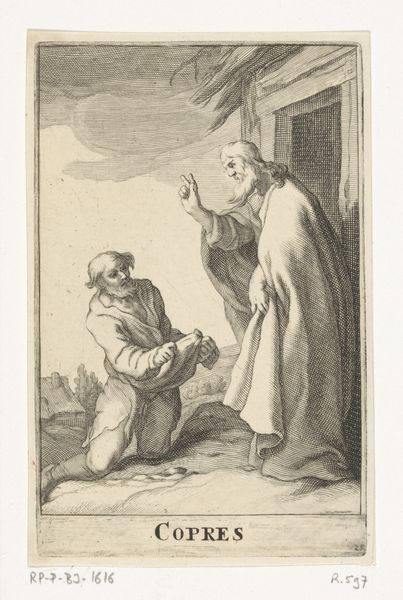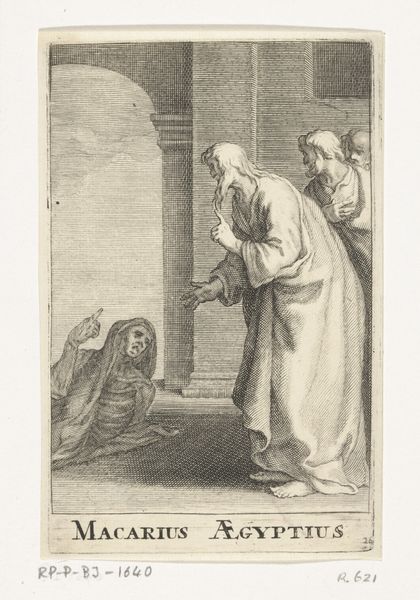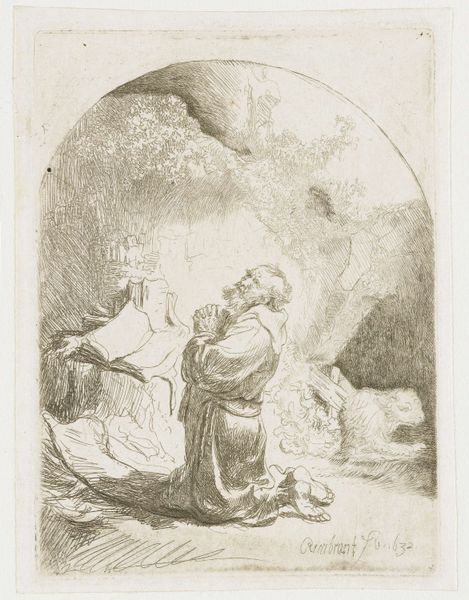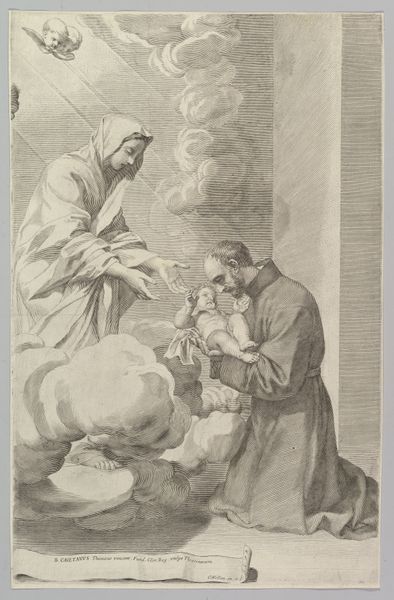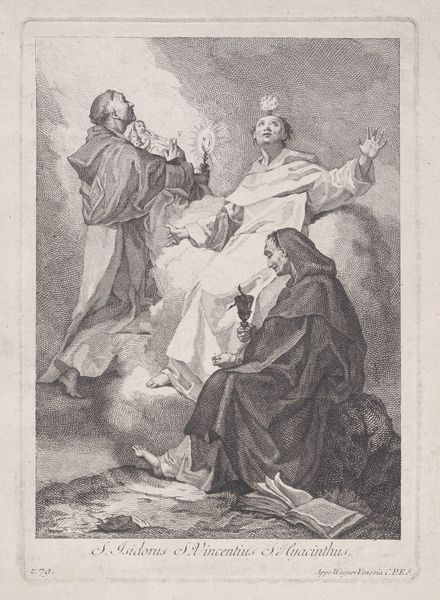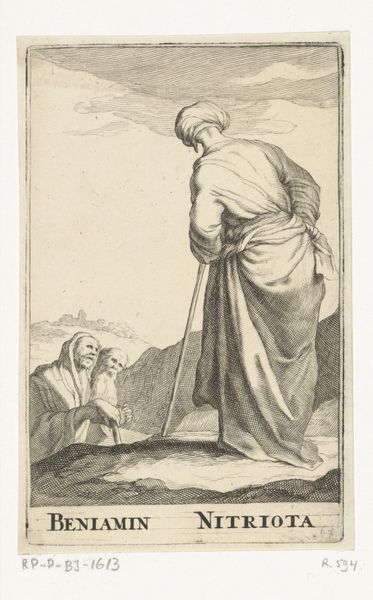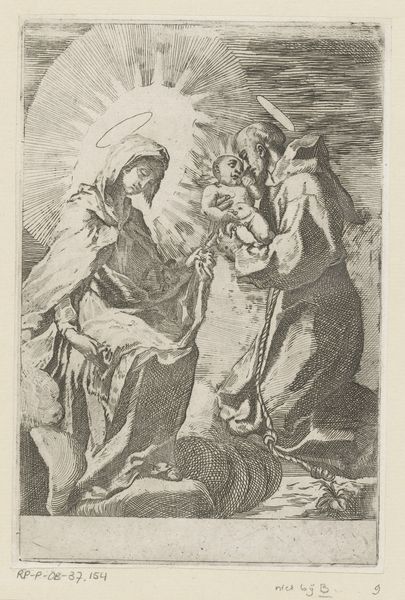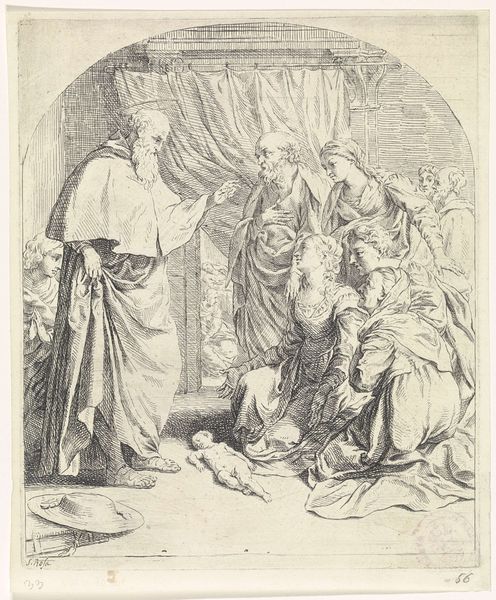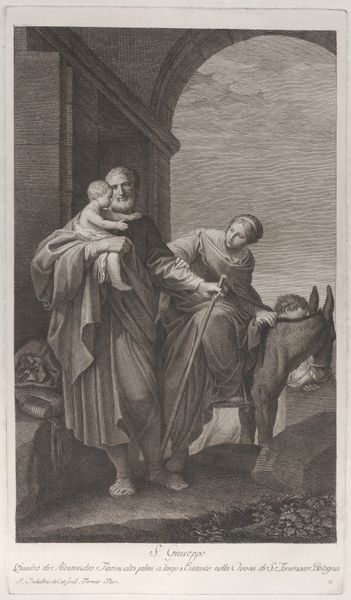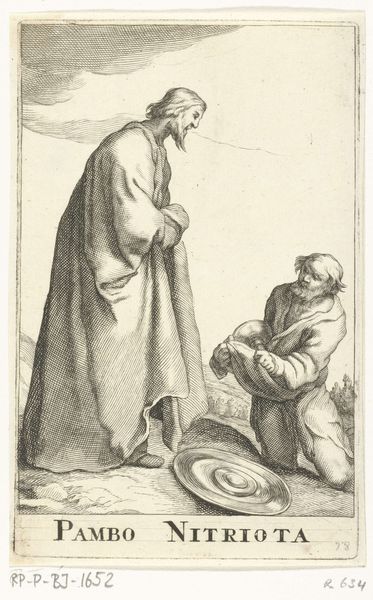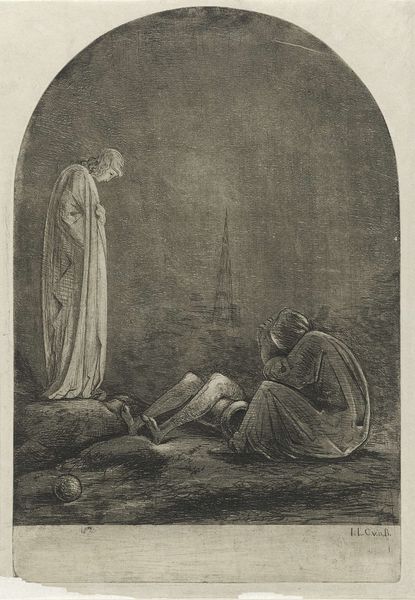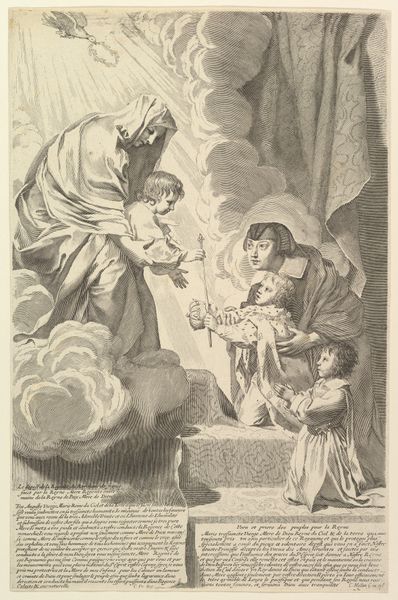
De H. Cajetanus van Thiene neemt van Maria het Christuskind in de armen 1671 - 1688
0:00
0:00
drawing, paper, pencil
#
portrait
#
drawing
#
pencil sketch
#
figuration
#
paper
#
pencil
#
portrait drawing
#
history-painting
#
academic-art
#
italian-renaissance
Dimensions: height 372 mm, width 286 mm
Copyright: Rijks Museum: Open Domain
Curator: Up next, we have Claude Mellan’s pencil drawing, "De H. Cajetanus van Thiene neemt van Maria het Christuskind in de armen," dating from somewhere between 1671 and 1688. It depicts Saint Cajetan receiving the Christ Child from the Virgin Mary. My initial impression is one of profound gentleness and almost a sacred intimacy. It’s like witnessing a deeply private, divine moment captured in a very vulnerable style. Editor: I see exactly what you mean. The overall effect feels muted, dreamlike almost. Even the composition reinforces that with the floating figure of Mary seemingly descending on a cloud of vaporous forms, while St. Cajetan receives the infant with tremendous care. And the grey pencil work creates a kind of emotional atmosphere – reserved, hushed. Do you find that the lack of color helps the viewer focus more on the raw emotion in the piece? Curator: Absolutely. The absence of vibrant colors actually heightens the emotionality, stripping away any distractions and allowing us to really focus on the exchange, the pure giving and receiving, symbolized in that moment of handover. It’s stripped down and humanized by the drawing and sketching aesthetic. Plus, I think Mary's gaze directs you straight to Cajetan’s vulnerability and open trust. Editor: Agreed, her expression is a key element of the narrative and quite central to the symbolical meaning here. Considering iconographic interpretations of Mary, her gentle melancholy is the common emotion representing the burdens and the glories to come in bearing Christ. Cajetan mirrors her pose, as a devoted receiver who can understand her feelings and spiritual burdens. You almost feel the connection between mother and protector here, regardless of status or history. Curator: Mellan’s delicate lines manage to capture such a profound sense of awe and tenderness, a sort of echo in time. Thinking about it more closely, that baby represents potential and an embodied hope for humanity. Editor: That is exactly where that iconographic tradition leads; that symbolic exchange sets everything that follows in motion. Seeing it presented here so quietly allows room for contemplation on that burden of meaning that even a tiny baby has to carry. I think this is what will stay with me. Curator: It makes you wonder what Claude Mellan himself was thinking when he set this down. For me, that baby feels more than just a symbol—it feels startlingly alive.
Comments
No comments
Be the first to comment and join the conversation on the ultimate creative platform.
